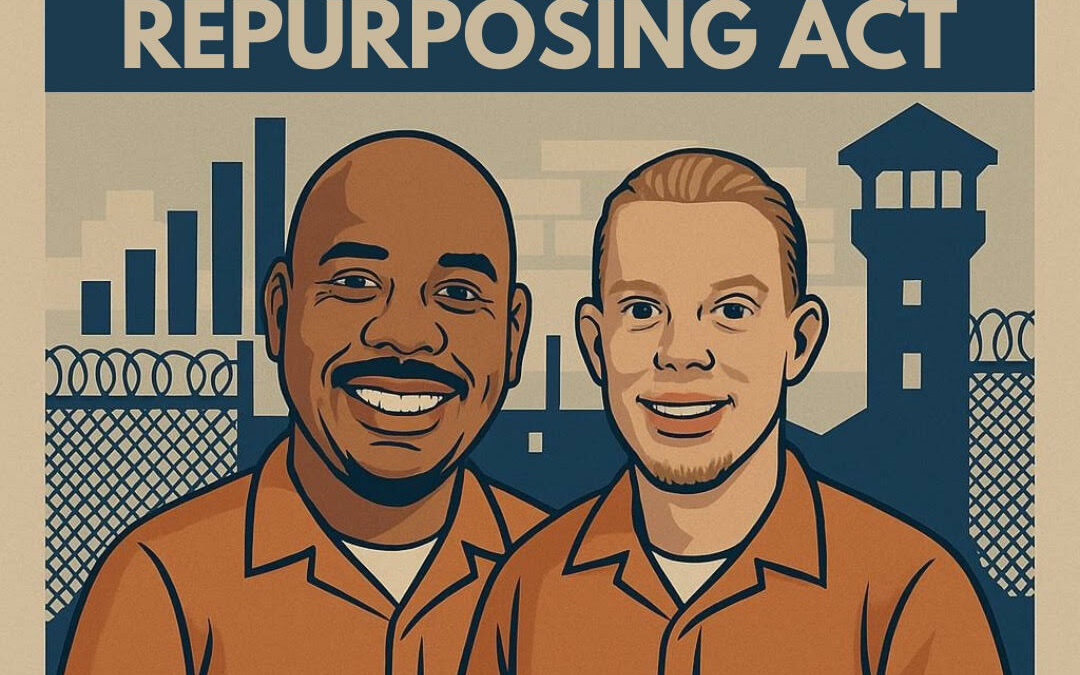Commentary by Phillip Vance Smith, II
North Carolina lawmakers sponsored the Prison Resources Repurposing Act (PRRA) for the third time as NC Senate Bill 681 on March 25. As an incarcerated man who has been serving life without parole (LWOP) for murder since 2002, coauthoring the PRRA with my friend and fellow lifer Timothy Johnson has proven to be my greatest achievement. But sponsorship is a milestone, not our end goal.
If passed, the PRRA would extend parole to some who are serving LWOP after the completion of educational, vocational, and behavioral requirements over a 20-year period. Under the plan, only exceptional candidates would be chosen by the North Carolina Post-Release Supervision and Parole Commission as a mercy, not an entitlement.
In our proposal, published in the North Carolina Law Review in 2022, Tim and I forward the PRRA as a possible solution to mounting problems confronting the North Carolina Department of Adult Correction (DAC), such as high recidivism rates, prison violence, and the growing cost of incarceration. But sadly, the PRRA died in the North Carolina House without so much as a vote in the 2021 and 2023 sessions. It is likely to die again during this legislative session if GOP lawmakers, who hold a majority, don’t take North Carolina’s prison problem seriously.
Mass incarceration is costing state taxpayers a fortune, unbeknownst to them, and the only logical solution is decarceration.
In a 2024 report, the North Carolina Sentencing and Policy Advisory Commission listed the state’s prison population at about 28,000 in 2021, its lowest since peaking at 40,000 in 2010. Today, that number has jumped to about 31,000, and the commission projects a spike to nearly 36,000 over the next decade. Such a rise should be alarming to the average taxpayer, because it now costs $134 per day to house someone in the DAC, or about $49,000 a year. Housing so many will require additional officers and additional prisons. But more people in prisons is not the state’s only problem.
NC Health News recently reported that last year’s cost of prison healthcare soared $48 million over budget to about $430 million, up more than $100 million from five years ago, due to the aging prison population. In January I wrote about state lawmakers lowering the age that infirm prisoners can seek medical release from age 65 to 55 as a response, but the measure won’t release nearly enough people to lower prison healthcare costs.
On top of that, the DAC is suffering an understaffing crisis. In 2024 I wrote about Nash Correctional in Nashville housing an extra 350 people over its capacity because the staff vacancy rate had forced the closure of multiple prison wings. As a remedy, one DAC spokesman suggested raising the correctional officer salary from about $38,000 a year to $50,000, close to what officers in other states are paid, according to NC Health News.
State lawmakers are unlikely to pay higher salaries because forking over an extra $12,000 per year to 8,000 correctional officer positions would add at least $96 million to the DAC’s annual $2 billion budget, according to the statistics reported by NC Health News.
Mandatory minimum sentencing caused North Carolina’s prison problem. In 1994 North Carolina eliminated merit-based parole in favor of making convicted people serve 85-100 percent of a prison sentence with the passing of the Structured Sentencing Act, creating an unsustainable prison system 30 years later.
What have we learned? The longer that people live in prison, the more it costs to care for them. So decarceration is the easy answer.
I don’t suggest flinging open prison gates to let every criminal out. But the DAC can implement a form of merit-based release that would promote the most deserving while passing over those who pose a continued threat to society. The PRRA is such a plan.
Tim and I designed the PRRA as a controlled release valve. Not only are the requirements strenuous, not everyone will be eligible. We wanted the state to grant a second chance to those willing to work for it, not everyone convicted of murder. Statistics prove that this can be done without a general risk to public safety.
The North Carolina Sentencing and Policy Advisory Commission found that 54 percent of the over-capacity projected prison population will be made up of those convicted for serious offenses, such as murder, even though this cohort displayed “the lowest recidivism rates.” These findings square with a report by the Prison Policy Initiative showing that those convicted of murder were rearrested at only 25 percent while the overall recidivism rate was about 66 percent.
These statistics prove what I have witnessed over two decades in prison. Many people find change here, in spite of the oppression and violence that lead some down the wrong path. We can’t atone for our crimes, but we can build a better future by working, going to school, or teaching others a better way to live. Those who change their lives while inside should be eligible for a second chance.
The PRRA is not a perfect solution. Some lawmakers won’t support it solely because it was drafted by incarcerated people. But they don’t have to pass the PRRA. I only ask that they pass something. If not, North Carolina will continue paying for a failing system that costs taxpayers more and more with each passing day.
